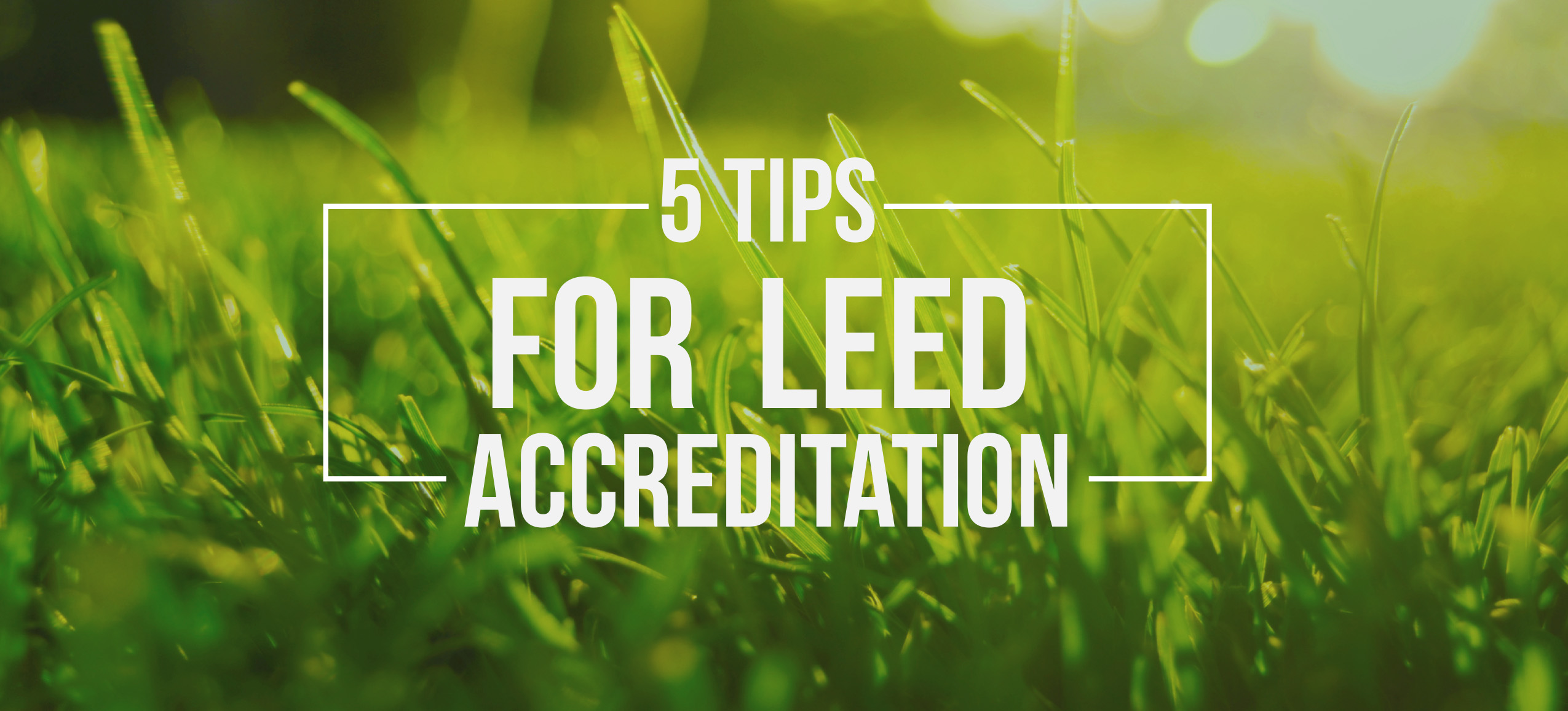5 Tips for LEED Accreditation
With sustainability at the forefront of our architectural cerebral cortex it has become increasingly important to know the basics of the LEED® rating system for buildings, which underscores why it is important to earn a LEED credential. So what is LEED? LEED stands for “Leadership in Energy and Environmental Design” and is a third-party certification indicating that the building has been designed with a sustainable mentality.
A building has four separate levels of intensity under this LEED umbrella that underpins how ‘green’ the building is. These rating levels are as follows: Certified, Silver, Gold, and at the top of the pyramid, Platinum. For more information on each of these building certifications please visit the US Green Building Council® website at www.usgbc.org
The professionals guiding LEED projects often have a LEED credential. So, I know by now you are undoubtedly chomping at the proverbial bit to get your LEED accreditation, but let’s pump the brakes a moment as I’ve laid out a few tips that may benefit you in your sustainable journey into LEED accreditation.
1. UNDERSTAND: Importance of a LEED Credential
The green building market is a growing industry and by attaining a LEED credential you are showcasing your knowledge, credibility, and commitment to sustainability.
2. CREDENTIAL: Which credential do you need?
Not all credentials are the same and you need to make the distinction as to which LEED credential applies to you.
The USGBC offers two tracks for LEED designations through examination: LEED Green Associate and Accredited Professional (AP) with a specialty.
LEED Green Associate
This is the door to the green building world and to step through it you will demonstrate you understand the most current green building principles and practices. With this designation you can build upon your certification with a specialty.
Accredited Professional (AP) Specialties:
LEED AP BD+C:
This specialty stands for Building Design + Construction, and it is best for individuals involved in the design and construction phases of building and to put it lightly, things just got real.
LEED AP O+M
O is for Operations and M is for Maintenance and this specialty is best suited for the implementation of sustainable practices, increasing efficiency, and the overall reduction of a buildings overall impact through an operations & maintenance standpoint.
LEED AP ID+C
Interior Design + Construction specialty focuses solely on the interior of a building and how to provide sustainable practices within the building and developing a healthy & productive working environment.
LEED AP ND
This specialty focuses on the Neighborhood Development in regards to the design and development of walkable communities.
LEED AP Homes
With fewer acronyms to decipher this accreditation would go to professionals involved in designing sustainable residences.
LEED Fellow
The third, and highest professional designation that a LEED professional can earn is a LEED Fellow. This is a peer-nominated distinction for leaders in the LEED and sustainable building industry. Ten years or more of sustainable building experience is required.
3. STUDY: These tests aren’t a piece of cake.
Although these tests are ‘green,’ they are no walk in the park (thank you I’ll be here all night); they are difficult. You can download exam guides, handbooks, and most of the information you need from the USGBC website. Study and prepare for these tests. There is a plethora of information to help you, however, the exams are rigorous, so prepare!
4. TEST: Take the exam you’ve chosen.
You’ll need to register for the exam at the USGBC website http://www.usgbc.org/credentials#taking . To take the test there is a fee, which could vary depending on whether or not you are a USGBC member. Fees are as follows:
Green Associate – $200 ($100 for students + $250 for non-members)
LEED AP – Full exam $400 ($550 for non-members)
(Associate Exam + Specialty Exam)
Specialty Only $250 ($350 for non-members)
Each section of the test is 100 multiple-choice questions and in order to pass you need a score of 170 or higher on a scale of 125-200. For AP specialty exams the only eligibility requirement is that some experience working on a LEED registered project is recommended, however, for the Green Associate there are no eligibility requirements.
5. CONTINUE: Just keep learning.
Education is a never-ending journey and LEED AP professionals must continue their education to maintain the credential. Essentially, every two years you must report hours, 15 hours for LEED Green Associates and 30 hours for LEED APs. Earning these hours can be simple as there are a multitude of activities of which you can maintain your credential. Some include: education, project experience, authorship, or volunteering. Download the Credential Maintenance Program guide from the USGBC website or just click here!
We at Kodet Architectural Group understand the importance of environmentally sustainable building design and currently have nine employees with a LEED accreditation. Sustainability is a commitment from the beginning of the design process and as a firm our goal is to design all projects according to LEED or Minnesota B3 standards. We analyze the benefits and costs, and set sustainable goals, which optimizes client ideals with their budget.
Edited by Kelly Martinez, Assoc. AIA, LEED AP BD+C

